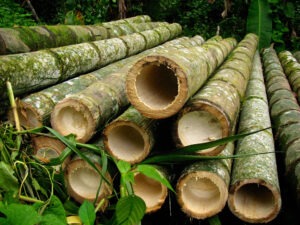The bamboo industry is experiencing remarkable growth, with demand projected to surge at a compound annual growth rate (CAGR) of 10.9% between 2024 and 2034. This growth is driven by the increasing consumer preference for sustainable and eco-friendly materials, as well as the versatile applications of bamboo across various industries, including construction, textiles, and furniture. By 2034, the market is estimated to reach an impressive valuation of USD 20,388.7 million, reflecting a significant shift towards greener alternatives and innovative product development. As awareness of environmental issues continues to rise, bamboo’s appeal as a renewable resource is likely to further fuel its expansion in the global market.
The global bamboo market is experiencing significant growth, driven by rising consumer awareness regarding sustainability and eco-friendly materials. With its versatility, bamboo is making its mark across various industries, including construction, textiles, furniture, and biofuels. This press release provides insights into the bamboo market, its growth drivers, emerging trends, and potential opportunities.
Understanding the Bamboo Market
Bamboo, known for its rapid growth and strength, has been utilized for centuries in various cultures around the world. As the demand for sustainable alternatives to traditional materials increases, the bamboo market is expanding rapidly. Factors such as increased urbanization, the rise of eco-conscious consumers, and advancements in bamboo processing technology are contributing to this growth.
Market Growth Drivers
- Sustainability and Environmental Awareness:
As consumers and businesses increasingly prioritize sustainability, bamboo stands out as a renewable resource that requires minimal water and pesticides. This makes it an attractive alternative to wood and synthetic materials.
- Diverse Applications:
Bamboo’s versatility allows it to be used in various applications, from construction materials (like flooring and scaffolding) to textiles (such as clothing and home furnishings). The rising demand for bamboo-based products across these sectors is fueling market growth.
- Government Initiatives and Policies:
Many governments are promoting the use of sustainable materials and supporting the bamboo industry through incentives and subsidies. Such initiatives encourage farmers to cultivate bamboo, thereby increasing supply.
Trends and Opportunities
- Innovative Product Development:
Companies are increasingly investing in research and development to create innovative bamboo products. This includes bamboo composites and bio-based alternatives for plastics, which can help tap into new markets.
- Growing Demand in the Construction Sector:
The construction industry is witnessing a surge in the use of bamboo as a sustainable building material. Its strength and flexibility make it ideal for structural applications, presenting a lucrative opportunity for manufacturers.
- Expansion in the Textile Industry:
The demand for bamboo fabrics is on the rise due to their natural softness, breathability, and hypoallergenic properties. Brands focusing on eco-friendly clothing and home textiles are likely to benefit from this trend.
- Increasing Awareness of Health Benefits:
Bamboo charcoal and other bamboo-derived products are gaining popularity for their health benefits, such as odor absorption and antibacterial properties. This trend presents opportunities for expansion in the health and wellness sector.
Explore the Full Report for Detailed Insights!
Key Players in the Bamboo Market
- Moso International BV
- Shanghai Tenbro Bamboo Textile Co. Ltd.
- Kerala State Bamboo Corporation Ltd.
- Bamboo Australia Pty. Ltd.
- Ecoplanet Bamboo
- Smith & Fong Co. Inc.
- Jiangxi Kangda Bamboo Ware Group Co. Ltd.
- Fujian Jianou Huayu Bamboo Industry Co. Ltd.
- Jiangxi Shanyou Industry Co. Ltd.
- Tengda Bamboo-Wood Co. Ltd.
- Higuera Hardwoods LLC
- Dasso Industrial Group Co. Ltd.
- Xingli Bamboo Products Company
- China Bamboo Textile Company Ltd.
Key Segments of the Industry
By End-use Industry:
In terms of the End-use Industry, the sector is divided into Wood and Furniture, (Timber Substitute, Plywood, Mat Boards, Flooring, Furniture, Outdoor Decking) Construction, (Scaffolding, Housing, Roads), Food, Pulp & Paper, Textile, Agriculture, and Others (charcoal & handicrafts).
By Region:
Key countries of North America, Latin America, Western Europe, Eastern Europe, East Asia, South Asia, Middle East and Africa (MEA), have been covered in the report.
